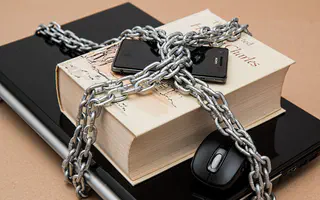Secure universal ID: What it is and why you need it
March 12, 2018 by Perry Chaffee

We’ve all heard the stories and jokes about an account being hacked because the password was “12345.” Take a minute to think about your passwords, though. Hopefully they are more secure than that, but how secure are they really: Are they written down somewhere? Are your security questions easy for anyone with the internet to answer?
Don’t be embarrassed. About 81 percent of data breaches are a result of these weak or stolen human-readable credentials – passwords, usernames, and security questions. Yet, this model of “security” has been the norm since the first Usenet newsgroups.
At some level, we all know this human-readable security model of username, password isn’t secure at all, but what can we do about it? The technology exists to change the model. It’s called secure universal ID (SUID) and it has the potential to change the way we look at security.
What is SUID?
Basically, SUID is an advanced authentication technology that uses a device like a smartcard or USB to replace everything from logins to ID badges.
The simple analogy is of a locked door with a locked vault behind it. When a user wants to login, she uses her passkey (the key) to connect with the service provider (the door). The service provider and passkey then bi-laterally authenticate with the authenticator (the vault). Only if these processes complete successfully does the user gain access to what’s inside the vault (data, applications, etc.).
SUID is more convenient
Part of the reason usernames and passwords are so easily hacked is because people have so many of them. It’s virtually impossible to have a unique username and password and security questions for each account. So people repeat them, and write them down or store them in a file on their computer. This isn’t just insecure, it’s difficult.
With SUID, you consolidate all your accounts and IDs – everything from your driver’s license to your frequent flyer cards – into a single card. Likewise, devices like key FOBs, tokens and badges can be consolidated, as well. You simply use your card, a secure passkey generator, or other secure means to log in to your system. No more remembering usernames and passwords for each different system, no more writing down critical information.
SUID improves overall security
Universal identity is more than just removing the vulnerabilities and inconvenience of usernames and passwords. It provides a whole different way of thinking about security. Rather than just something a user knows – like a password – it’s something a user has. Whether it’s a smartphone, smart card, or USB stick, this added layer of authentication virtually eliminates a hacker’s ability to gain access to your systems and accounts. It can also be combined with other security methods, like biometrics to provide multi-factor authentication.
Look at it the other way, too. How often do you hear about a breach where thousands of user IDs and passwords are compromised. SUID eliminates this worry. If your information is compromised, the hackers still can’t access the other piece – the piece you have. So, the data breaches in the news almost daily are much less likely to affect you personally; even if a hacker has your username and password, he still doesn’t have your card or USB.
So, if your’e sick of writing down your passwords and hoping nobody guesses your security questions, or you’re worried about your organization’s security, check SUID out. It can help you avoid breaches, keep data secure, and take the pain and hassle out of security.
Want to see how to get started? Watch a demo of secure universal ID in action.